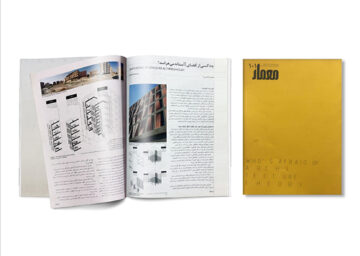Built on Paper
Doctoral dissertation by Sina Zarei
In Iran, “architecture writing” became possible in the frame of the modernisation process in the early decades of the twentieth century. Before the advent of modern art historiography in the late 1920s and modern education system of architecture in Iran in the 1940s, Persian texts were almost never focused on architecture as an independent topic. As a consequence of Reza Shah’s obligatory modernisation Architect, Bank-e-Sakhtemani and Memari-Novin were the first architecture magazines of Iran, which resulted in the articulation of several key concepts as specific topics for the field from 1940s, and also helped the communication of technical data to a non-specialised audience in the next decades. The new media also caused an unprecedented extreme of publication in the ten years after the 1979 revolution, when some titles of semi-public magazines were established under the support of the government.
This research explores the focus on two major architecture magazines in Iran from 1991-2005 (Abadi and Memar) and it also considers the role played by those magazines in the development of a new discourse of architecture which here is assumed to be defining a specific meaning of architecture. It also tries to clarify the discursive strategies which lead to the creation of a specific “meaning of architecture” that is assumed to be a consequence of the major demands of the supporting institutions and the dominant social and political discourses in two periods after the 1979 revolution. It is initially assumed that the political discourse of construction 1989-1997 with economy, investment, reconstruction and development as the main keywords, is the most prominent framework with significant influences on the content of the architectural public magazines. However, further studies will indicate other possible discourses and clarify the different features of that meaning of architecture in Iran.


